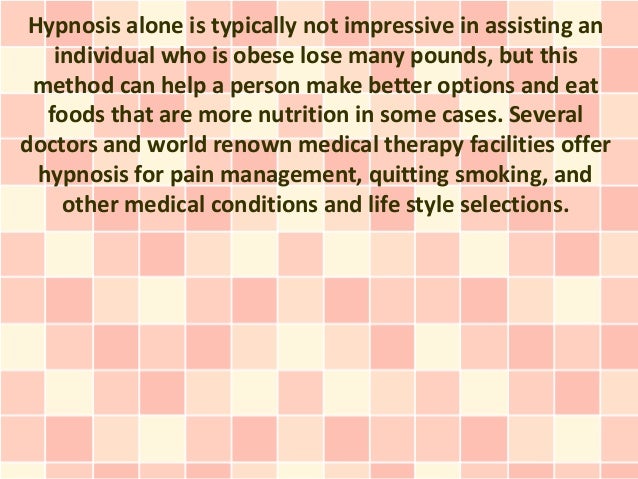
Emetophobia is a fear of vomiting, nausea, and even throwing up. Emetophobia can become so severe that it can affect one's ability to function normally. You must learn to identify the anxiety and symptoms that cause emetophobia. Emetophobia can also be a comorbid condition. This means that a person may have more than one fear.
Emetophobic patients tend to avoid crowds and alcohol. Emetophobics may avoid long car trips and be more open to trying new foods. Emetophobia can lead to severe nausea and vomiting. Emetophobia means that a person avoids eating, travelling, and participating in social events. Some may refuse to go to school.

Emetophobia can be treated using a variety of methods, but exposure and response prevention as well as cognitive behavioral therapy are the best. These methods are focused on identifying and eliminating faulty beliefs. These techniques help you to see the bigger picture and develop a winning mindset. Emetophobia can also lead to certain obsessions or habits. One example is that a person might find they sleep better in a certain room, or keep a towel close to their bed. This allows them to avoid the fear and anxiety of vomiting.
Those with emetophobia may feel compelled to memorize the location of the nearest toilet, and may even fear driving on long car trips. They might feel safer in the car and refuse to accept passengers. But, fear of vomit is often a comorbid condition. As it can affect one's ability to live a normal life, it is important to seek medical help.
The first step towards treating emetophobia, is to identify the problem. This can be done by a therapist who will help you to identify the phobia and then break down stressful situations and assess their intensity. After identifying these situations, the therapist will have you stay in the situation until you no longer feel anxiety. This therapy is completely confidential. The same therapy may be repeated until you stop being prone to emetophobia.

Emetophobics may be scared of certain foods. For example, they may avoid bread products because of mold, while they might be able to tolerate certain kinds of fried food. They might also be reluctant to consume alcohol, fried foods, or alcohol. Prescription medications may cause nausea, so they might avoid them. Emetophobia is a condition that makes it difficult to eat fast, or late in the night.
Emetophobia can sometimes even be treated by introducing the patient and other items that may trigger vomiting. This therapy does not require the individual to actually vomit. It is about practicing with situations and items that can cause the emetophobics to vomit. A patient might be scared to enter a restaurant because of the possibility of nausea. Emetophobics may also avoid eating at buffet tables or using public transport, if they fear vomiting.
FAQ
Is it possible to have a weak immune system due to being cold?
Cold makes you weaker because you have less white blood cells to fight infection. You will feel less pain if you are cold.
These are 5 ways you can live a healthy and happy life.
Living a healthy lifestyle involves eating right and exercising regularly. Good eating habits include avoiding processed foods, sugar, unhealthy fats, and avoiding junk food. Exercise is good for your body and muscles. You can improve your memory and concentration by getting enough sleep. Stress management is a way to reduce anxiety levels and depression. Fun is key to staying young and vibrant.
Which are the top 10 foods you should eat?
These are the 10 best foods to try:
-
Avocados
-
Berries
-
Broccoli
-
Cauliflower
-
Eggs
-
Fish
-
Grains
-
Nuts
-
Oats
-
Salmon
What is the difference of fat and sugar?
Fat is an important energy source, which comes from food. Sugar is naturally found in fruits and veggies. Both sugars and fats have the same calories. Fats however, have more calories than sugars.
Fats are stored in your body and can cause obesity. They cause cholesterol buildup which can lead to strokes and heart attacks.
Sugars can be quickly absorbed by your body and give you instant energy. This causes blood glucose levels rise. High blood glucose levels can lead to type II diabetes.
How to measure bodyfat?
The best way to measure body fat is with a Body Fat Analyzer. These devices measure the body fat percentage in people who wish to lose weight.
Statistics
- According to the 2020 Dietary Guidelines for Americans, a balanced diet high in fruits and vegetables, lean protein, low-fat dairy and whole grains is needed for optimal energy. (mayoclinichealthsystem.org)
- nutrients.[17]X Research sourceWhole grains to try include: 100% whole wheat pasta and bread, brown rice, whole grain oats, farro, millet, quinoa, and barley. (wikihow.com)
- WHO recommends consuming less than 5% of total energy intake for additional health benefits. (who.int)
- According to the Physical Activity Guidelines for Americans, we should strive for at least 150 minutes of moderate intensity activity each week (54Trusted Source Smoking, harmful use of drugs, and alcohol abuse can all seriously negatively affect your health. (healthline.com)
External Links
How To
What does "vitamin" actually mean?
Vitamins are organic compounds naturally found in food. Vitamins help us absorb nutrients from foods we eat. Vitamins cannot be produced by the body. They must be acquired from food.
Two types of vitamins exist: water-soluble vitamin and fat-soluble vitamin. Water soluble vitamins dissolve easily in water. Vitamin C,B1(thiamine), B2 (2riboflavin), and B3 (3niacin), as well as vitamin C,B1, B2 (riboflavin), and B3 (niacin), vitamin B6 (pyridoxine), vitamin folic acid (biotin), pantothenic, and choline are examples. Fat-soluble vitamins can be stored in the liver or in fatty tissue. These include vitamin D, E and K, as well as beta carotene.
Vitamins can be classified according to biological activity. There are eight main groups of vitamins.
-
A - essential for normal growth and maintenance of health.
-
C - vital for proper nerve function, and energy production.
-
D - Essential for healthy teeth and bones.
-
E - needed for good vision and reproduction.
-
K - required for healthy muscles and nerves.
-
P – vital for building strong bones.
-
Q – aids digestion of iron and iron absorption
-
R - Red blood cells are made from red blood cells.
The recommended daily allowance (RDA) of vitamins varies depending on age, gender, and physical condition. The U.S. Food and Drug Administration, (FDA), sets the RDA value.
For adults aged 19 and older, the RDA for vitamin B is 400 micrograms daily. Pregnant mothers need 600 micrograms per days because it is vital for the development and growth of their baby. Children ages 1-8 require 900 micrograms per day. Infants under one year of age require 700 micrograms per day, but this amount decreases to 500 micrograms per day between 9 months and 12 months of age.
Children between the ages of 1-18 need 800 micrograms per daily for obesity, while children overweight require 1000 micrograms. Children underweight or obese will need 1200 mg per day.
Children between 4 and 8 years old with anemia will need 2200 micrograms daily of vitamin C.
2000 micrograms is the minimum daily intake for adults over 50 years old to maintain good health. Women who are pregnant or breastfeeding need 3000 micrograms per day due to increased nutrient requirements.
Adults over 70 need 1500 micrograms daily, as they lose 10% of their muscle every ten years.
Women who are pregnant or lactating need more than the RDA. Pregnant women require 4000 micrograms daily during pregnancy, and 2500 micrograms every day after birth. Breastfeeding mothers need to consume 5000 micrograms every day when breastmilk has been produced.